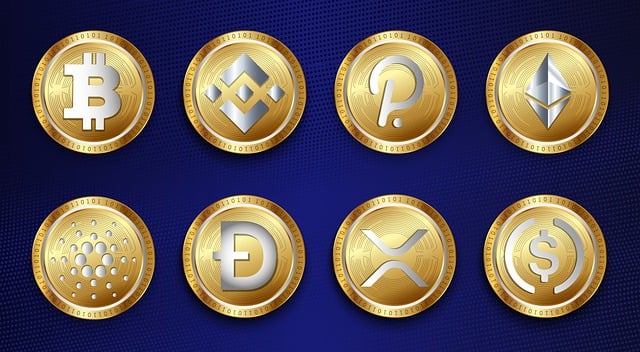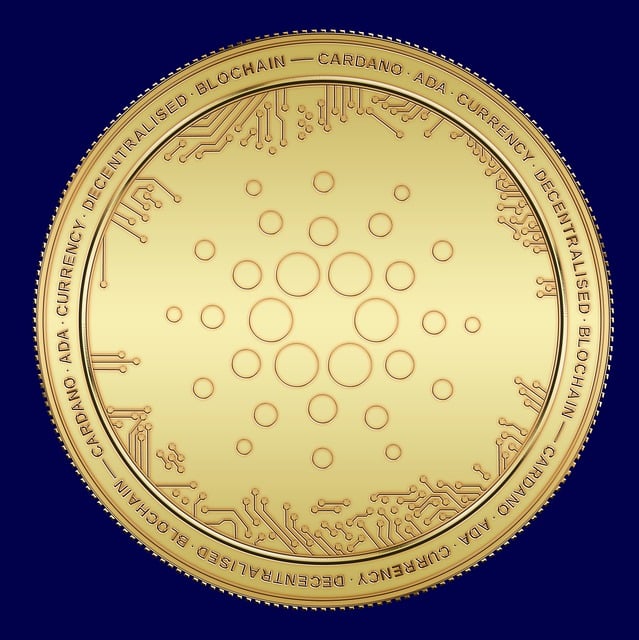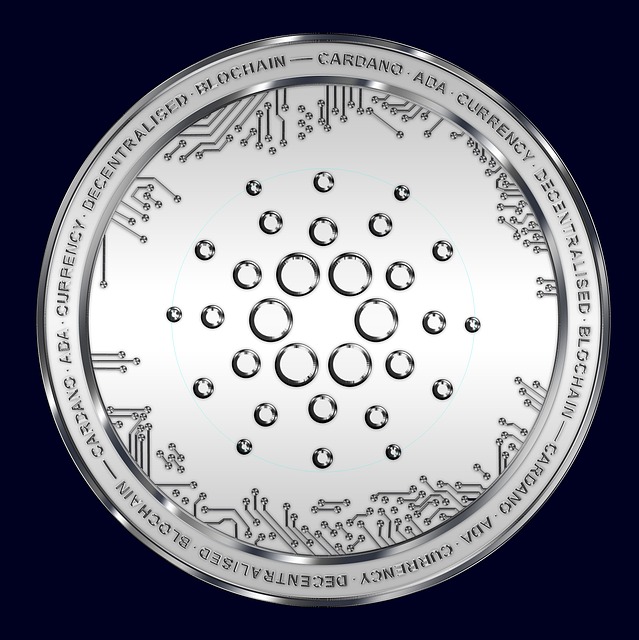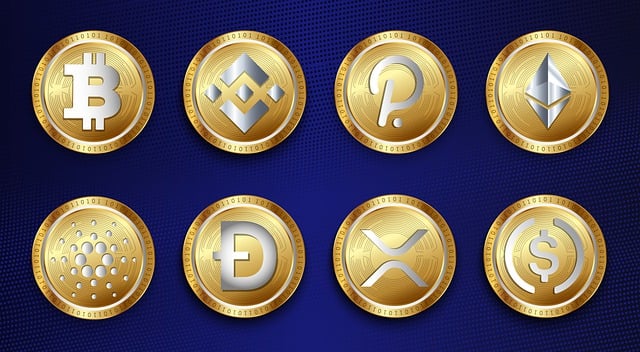
Cardano (ADA), founded by Charles Hoskinson, is a blockchain project known for its rigorous academic approach and advanced cryptography. Its focus on scalability, energy efficiency, and regulatory compliance makes it an ideal candidate for Central Bank Digital Currencies (CBDCs). Cardano's proof-of-stake consensus mechanism promotes energy conservation and inclusive participation. The integration of Cardano with CBDCs offers faster transactions, lower costs, enhanced privacy, and financial inclusion. Its versatile ecosystem supports payments, DeFi, decentralized identity, and supply chain optimization. However, regulatory alignment challenges require collaboration to establish supportive legal frameworks. Cardano is poised to lead the transition to a digital financial future, revolutionizing global finance with its advanced blockchain technology.
“Cardano, a blockchain platform with a unique blend of security and sustainability, is at the forefront of revolutionizing global finance. As central banks worldwide explore Central Bank Digital Currencies (CBDCs), Cardano’s advanced technologies offer a seamless bridge between traditional finance and decentralized innovation. This article delves into the potential of Cardano in facilitating the transition to CBDCs, exploring benefits, use cases, and challenges. By understanding Cardano’s position, we uncover its pivotal role in shaping the future of global financial systems.”
- Understanding Cardano and its Unique Position in the Crypto Space
- The Rise of Central Bank Digital Currencies (CBDCs)
- How Cardano Can Facilitate the Transition to CBDCs
- Exploring the Benefits of Integrating Cardano with CBDCs
- Potential Use Cases: Real-World Applications of Cardano and CBDCs
- Overcoming Challenges in Adopting Cardano-based CBDCs
- The Future Outlook: Cardano's Role in Shaping Global Finance
Understanding Cardano and its Unique Position in the Crypto Space

Cardano (ADA) stands out as a pioneering project in the blockchain space, offering a unique blend of scientific research and decentralized technology. Founded by Charles Hoskinson, one of the co-founders of Ethereum, Cardano is often hailed for its rigorous academic approach to blockchain development. The platform leverages advanced cryptography and peer-reviewed research to ensure its security and sustainability. This meticulous design has positioned Cardano as a leading candidate in the race for Central Bank Digital Currencies (CBDCs).
Unlike many other cryptocurrencies, Cardano’s focus on scalability, energy efficiency, and regulatory compliance makes it an attractive option for governments exploring digital currencies. Its proof-of-stake consensus mechanism not only reduces energy consumption but also fosters a more inclusive ecosystem where users can participate by staking their ADA tokens. This unique position allows Cardano to bridge the gap between traditional finance and decentralized technologies, offering a promising path forward for the future of money.
The Rise of Central Bank Digital Currencies (CBDCs)

In recent years, Central Bank Digital Currencies (CBDCs) have emerged as a game-changer in the world of finance, sparking interest across the globe. This shift is driven by central banks’ efforts to keep pace with technological advancements and the growing digital economy. Traditional fiat currencies are undergoing a transformation as governments and financial institutions explore the potential of blockchain technology and decentralized digital assets. One prominent player in this space is Cardano (ADA), a blockchain platform that has gained traction for its innovative approach to creating a robust and scalable digital currency ecosystem.
The rise of CBDCs represents a significant evolution, offering greater efficiency, security, and accessibility in financial transactions. With the potential to enhance payment systems, reduce costs, and increase financial inclusion, these digital currencies are set to reshape how we interact with money. Cardano’s role in this revolution is noteworthy, as its underlying technology provides a framework for secure and transparent CBDC implementation, ensuring data privacy and robust infrastructure for the future of finance.
How Cardano Can Facilitate the Transition to CBDCs

Cardano, with its robust smart contract platform and strong emphasis on security and scalability, is well-positioned to facilitate a smooth transition to Central Bank Digital Currencies (CBDCs). The network’s unique consensus mechanism, Proof of Stake (PoS), ensures energy efficiency and makes it a more environmentally friendly alternative compared to proof-of-work systems used by some other blockchain platforms. This is particularly significant as governments worldwide explore CBDCs to enhance financial inclusion and improve payment systems.
Cardano’s decentralized nature allows for the creation of trustless, transparent, and efficient money transfer systems, aligning with the core principles of CBDC adoption. The platform’s ability to support diverse use cases, from payments to decentralized finance (DeFi), means it can accommodate a wide range of potential CBDC applications. Moreover, Cardano’s extensive research and development in areas like blockchain interoperability and regulatory compliance make it a reliable choice for central banks looking to enter the digital currency space.
Exploring the Benefits of Integrating Cardano with CBDCs

The integration of Cardano (ADA) with Central Bank Digital Currencies (CBDCs) presents a compelling opportunity to revolutionize traditional financial systems. Cardano’s robust and scalable blockchain technology offers a secure and efficient infrastructure for managing digital currencies issued by central banks. By leveraging ADA, CBDCs can benefit from enhanced transaction speed, lower costs, and improved privacy compared to existing centralized banking models.
This fusion also unlocks new possibilities for financial inclusion, enabling unbanked or underbanked populations to access digital financial services seamlessly. Cardano’s decentralized nature ensures transparency, security, and community governance, addressing concerns about centralization and potential single points of failure. Moreover, the flexibility of smart contracts on Cardano allows for the creation of complex financial instruments and innovative use cases tailored to the specific needs of different economies and societies.
Potential Use Cases: Real-World Applications of Cardano and CBDCs

Cardano, a blockchain platform that has gained significant traction, offers a robust ecosystem for decentralized applications and smart contracts. One of its most promising aspects is its potential to facilitate Central Bank Digital Currencies (CBDCs). In the real world, Cardano and CBDCs could revolutionize cross-border transactions by providing faster, more secure, and cost-efficient payment solutions. This technology can empower individuals and businesses with greater financial inclusion, offering a more accessible and transparent alternative to traditional banking systems.
Additionally, Cardano’s scalability and security features make it suitable for various use cases. It can support decentralized identity management, enabling users to control their personal data while facilitating secure online interactions. The platform also has the potential to transform supply chain management by creating transparent and tamper-proof records of goods’ origins and movement, enhancing traceability and efficiency in logistics.
Overcoming Challenges in Adopting Cardano-based CBDCs

Adopting Cardano-based Central Bank Digital Currencies (CBDCs) presents several challenges that must be overcome for widespread acceptance and integration into traditional financial systems. One significant hurdle is ensuring regulatory alignment while preserving the core principles of decentralization offered by blockchain technology. Balancing these two objectives requires careful design and collaboration between central banks, regulators, and developers to create robust legal frameworks that support innovation without compromising security or stability.
Another challenge lies in educating stakeholders—from policymakers to the general public—about the benefits and potential risks associated with CBDCs on the Cardano platform. Building trust and fostering understanding are crucial steps in encouraging adoption, especially when addressing concerns related to privacy, data ownership, and potential technical glitches. Effective communication strategies will be vital to navigating these challenges and ensuring a smooth transition towards a more digital financial future.
The Future Outlook: Cardano's Role in Shaping Global Finance

As we peer into the future of global finance, Cardano emerges as a key player in shaping the landscape. Its unique blend of scientific rigor and decentralized principles positions it to play a pivotal role in the upcoming wave of Central Bank Digital Currencies (CBDCs). With its advanced blockchain technology, Cardano offers scalability, security, and interoperability—crucial elements for CBDCs to efficiently integrate into traditional financial systems.
The future outlook paints a picture where Cardano’s robust framework enables seamless interactions between centralized banks and decentralized networks. This symbiotic relationship promises enhanced transaction speeds, reduced costs, and increased accessibility to financial services worldwide. As the world moves towards digital currencies, Cardano is well-positioned to facilitate this transition, ensuring a smooth evolution rather than a disruptive revolution in global finance.
Cardano’s robust ecosystem and unique positioning within the crypto space make it an ideal candidate to bridge traditional finance with decentralized technologies. By facilitating the transition to Central Bank Digital Currencies (CBDCs), Cardano can offer enhanced security, scalability, and transparency. Through real-world applications, this integration promises to revolutionize global finance, overcoming challenges to establish a more efficient and inclusive financial system. As we look ahead, Cardano’s role in shaping the future of finance is poised to be transformative.






